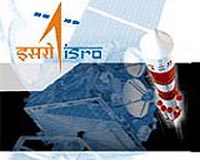 |
Moffett Field CA (SPX) Jul 22, 2010 Aerospace engineers at NASA's Ames Research Center are conducting a series of wind tunnel tests to develop technology for future human space exploration. Using a six percent scale Orion model, featuring complex moving parts, engineers are simulating various launch abort conditions the spacecraft might encounter during ascent to characterize the effects of launch abort and control motor plumes on the aerodynamics of the Orion spacecraft. One of the critical aspects of human space flight is the ability to protect astronauts in case of a failure on the launch pad and during the climb to orbit. In case of such an emergency, NASA engineers have designed a launch abort system, or LAS, to safely deliver astronauts aboard the Orion spacecraft away from the failure and return them to Earth. There are extremely complex interactions between the launch abort systems control effectors, or motors, and the aerodynamic environment that the spacecraft encounters. Wind tunnel testing, using scaled models, is one of the means for NASA engineers to better understand and explain this dynamic interaction. "Simulating launch aborts will help us explain the complex interaction between the plumes from the smaller attitude control motor and the larger abort motor," said Jim Ross, an aerospace engineer who is leading the team at Ames supporting NASA's efforts to develop Orion and its systems. "This is the most intricate wind tunnel model the Orion team has developed and the data we obtain will go a long way toward defining the aerodynamics of the Orion spacecraft during ascent," Ross said. The abort system is a tower atop a cover that fits over Orion during launch and ascent through Earth's atmosphere. It features a powerful, four-nozzle solid rocket, called the abort motor, which, when engaged, will quickly shepherd Orion and its precious human cargo away from the launch vehicle in an emergency. It also is equipped with a smaller, eight-nozzle motor at the top of the tower, called the attitude control motor, which is designed to steer and stabilize Orion towards safety. In the wind tunnel, plumes from both of these motors are simulated using high-pressure air. "Our team at Ames Research Center conducts simulations that help us develop assured launch abort technology and resolve complex aerodynamic interactions," said Mark Geyer, Orion Project Office manager at NASA Johnson Space Center, Houston. "The teams work greatly contributes to ensuring the safety of the astronaut crew throughout the entire mission. The launch abort system wind tunnel tests were a major factor in the development of the LAS and the recent successful Pad Abort 1 flight test." The wind tunnel tests at NASA Ames are part of a larger effort to facilitate the development of Orion, NASA's new Orion spacecraft. Engineers across the agency, including NASA's Johnson Space Center, Houston and NASA's Langley Research Center, Hampton, Va., are involved in successfully completing these tests in wind tunnels across the nation.
Share This Article With Planet Earth
Related Links Orion Launch Pad at Space-Travel.com
 ISRO To Launch More Satellites This Year
ISRO To Launch More Satellites This YearSriharikota (PTI) Jul 13, 2010 After successfully placing five satellites in orbit on Monday, India's space agency ISRO said it will launch more satellites this year and efforts were on to put two Indians in space orbit. 'We will launch GSat-5, a communication satellite, using GSLV (Geosynchronous Satellite Launch Vehicle) rocket. The other launch will be Resourscesat-2, a remote sensing satellite, using the rocket PSLV ... read more |
|
| The content herein, unless otherwise known to be public domain, are Copyright 1995-2010 - SpaceDaily. AFP and UPI Wire Stories are copyright Agence France-Presse and United Press International. ESA Portal Reports are copyright European Space Agency. All NASA sourced material is public domain. Additional copyrights may apply in whole or part to other bona fide parties. Advertising does not imply endorsement,agreement or approval of any opinions, statements or information provided by SpaceDaily on any Web page published or hosted by SpaceDaily. Privacy Statement |